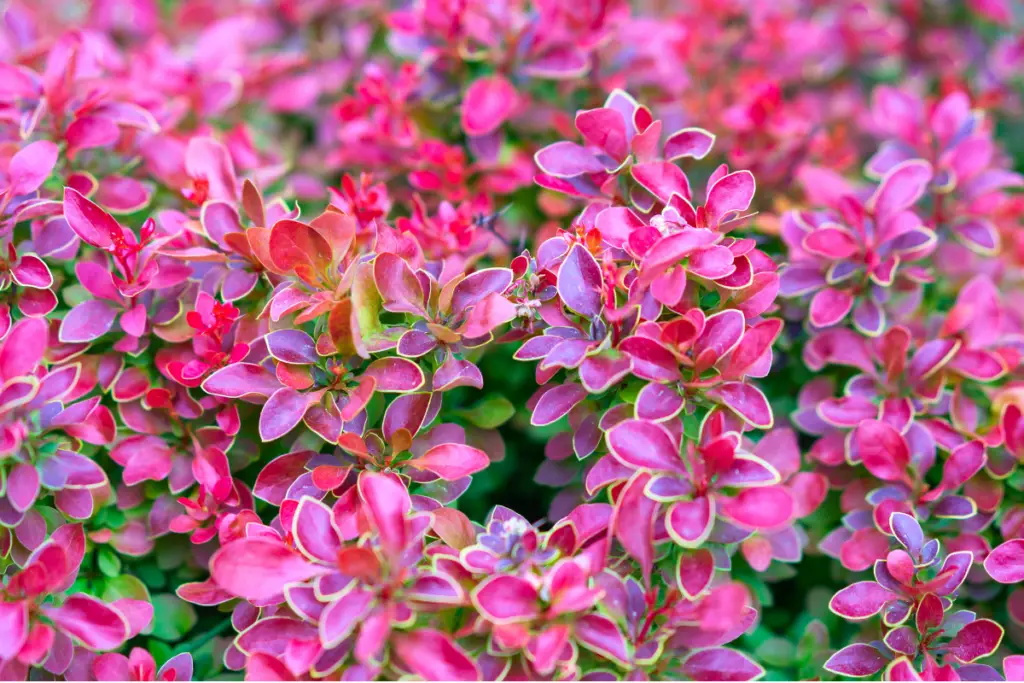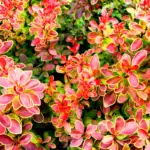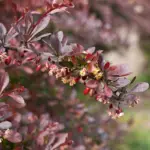Berberis thunbergii is a popular garden plant that is native to Japan. This plant is known for its colorful foliage and its ability to thrive in a variety of growing conditions.
One of the most common questions that gardeners have about Berberis thunbergii is whether or not it is an evergreen plant.
The answer to this question is somewhat complex. While Berberis thunbergii is typically classified as a deciduous shrub, it does retain some of its leaves throughout the winter months.
This means that while it is not technically an evergreen plant, it does have some evergreen characteristics.

Understanding the unique growing habits of Berberis thunbergii is essential for gardeners who want to incorporate this plant into their landscaping designs.
Table of Contents
Berberis thunbergii Overview
Physical Characteristics
Berberis thunbergii, commonly known as Japanese barberry, is a deciduous shrub that typically grows to a height of 3-6 feet (0.9-1.8 meters) and a spread of 4-7 feet (1.2-2.1 meters).
Its leaves are small, oval-shaped, and bright green, turning to red or orange in the fall. The branches of the shrub are covered in small, sharp thorns.
The flowers of Berberis thunbergii are small, yellow, and bloom in mid to late spring. They are followed by small, bright red berries that ripen in late summer and persist through the winter.
Native Range
Berberis thunbergii is native to Japan, but has been widely cultivated in North America as an ornamental plant. It is commonly used in landscaping due to its attractive foliage and berries, as well as its tolerance for a wide range of growing conditions.
Despite its popularity, Berberis thunbergii has become an invasive species in some areas of North America, particularly in the northeastern United States.
The shrub is able to grow in a variety of soil types and light conditions, and can outcompete native vegetation, reducing biodiversity and altering ecosystems.
Deciduous or Evergreen?
Defining Evergreen
Evergreen plants are those that retain their leaves or needles throughout the year, rather than dropping them seasonally. This means that they maintain their green foliage even in the winter months.
Berberis thunbergii as an Evergreen
Berberis thunbergii, also known as Japanese barberry, is a shrub that is commonly used in landscaping. It is often valued for its red or purple foliage, which can add color to a garden or yard.
Berberis thunbergii is considered to be an evergreen shrub, as it retains its leaves throughout the year.
Factors Affecting Evergreen Status
While Berberis thunbergii is generally considered to be an evergreen shrub, there are some factors that can affect its foliage.
For example, in areas with harsh winters, the leaves may turn brown or drop off due to cold temperatures or lack of moisture.
Additionally, if the shrub is stressed or damaged, it may lose its leaves prematurely.
Overall, Berberis thunbergii can be considered an evergreen shrub, but its foliage may be affected by environmental factors and stress.
Caring for Berberis thunbergii
Berberis thunbergii is a tough and hardy shrub that requires minimal maintenance. However, to keep it healthy and looking its best, a few simple care practices should be followed.
Watering
Berberis thunbergii is drought-tolerant and can survive in a range of soil types. However, it should be watered regularly during dry spells, especially during the first year after planting.
Water deeply once a week, rather than frequent shallow watering, to encourage deep root growth.
Fertilizing
Berberis thunbergii does not require frequent fertilization. However, a slow-release fertilizer can be applied in the spring to encourage healthy growth and flowering. Follow the manufacturer’s instructions for application rates.
Pruning
Berberis thunbergii is a slow-growing shrub that requires minimal pruning. However, it can be pruned in late winter or early spring to remove any dead, damaged, or diseased wood.
It can also be shaped to maintain a desired size and shape. Wear gloves and protective clothing when pruning, as the thorns can be sharp.
Overall, Berberis thunbergii is a low-maintenance shrub that can add color and interest to any landscape.
With a little bit of care, it can thrive in a variety of growing conditions and provide beauty for years to come.
Landscaping with Berberis thunbergii
Berberis thunbergii is a popular plant for landscaping due to its hardiness, low maintenance, and striking appearance.
It is a deciduous shrub that can add color and texture to any garden or landscape. However, many people wonder if Berberis thunbergii is an evergreen plant.
Prices pulled from the Amazon Product Advertising API on:
Product prices and availability are accurate as of the date/time indicated and are subject to change. Any price and availability information displayed on [relevant Amazon Site(s), as applicable] at the time of purchase will apply to the purchase of this product.
Design Ideas
Berberis thunbergii can be used in a variety of ways in landscaping. Its vibrant foliage can be used as a backdrop for other plants, or it can be used as a focal point in a garden.
The plant’s thorny nature also makes it a good choice for creating a natural barrier or hedge.
Berberis thunbergii comes in a variety of colors, including red, orange, yellow, and purple. This means that it can be used to add a pop of color to any landscape.
Its small size also makes it a good choice for container gardening or for planting in small spaces.
Companion Plants
Berberis thunbergii can be paired with a variety of other plants to create a beautiful and cohesive landscape. Some good companion plants for Berberis thunbergii include:
- Boxwood
- Lavender
- Hosta
- Hydrangea
These plants complement Berberis thunbergii’s colors and textures, creating a visually appealing landscape.
Conclusion
Berberis thunbergii is a deciduous shrub. It sheds its leaves annually during the fall season and grows new leaves in the spring.
While some species of Berberis may be evergreen, Berberis thunbergii is not one of them. This plant is native to Japan and is commonly cultivated as an ornamental plant in gardens and landscaping.
Its small yellow flowers bloom in spring, followed by red or black berries in the summer and fall, which attract birds and other wildlife.
Berberis thunbergii is a hardy plant that is easy to grow and maintain, making it a popular choice for gardeners and landscapers.
- How to Build a Planter Box for Bamboo: A Step-by-Step Guide

- Can Robotic Lawnmowers Handle Steep Slopes?

- Do You Need a Specific Lawn for a Robotic Lawnmower? Expert Advice

- Are Robotic Lawnmowers Safe for Pets and Children? Safety Features of Robotic Lawnmowers

- Why Use Robotic Lawnmowers? Advantages of Using a Robotic Lawnmower

- Is the GARDENA SILENO City 300 Cordless or Corded? A Clear Answer























